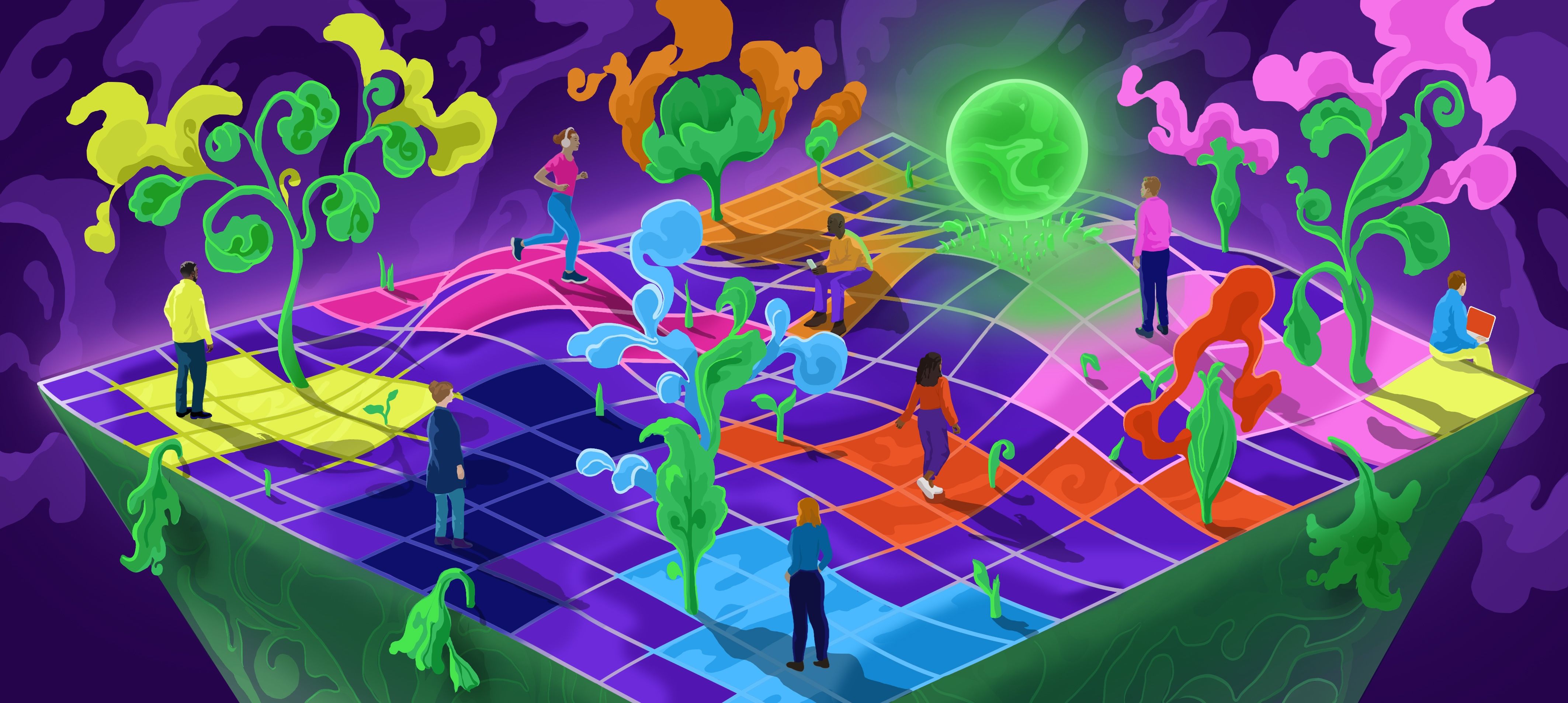Audiences for Climate Communications

2023-12-08
The “cookie,” that little chunk of data that has allowed advertisers to find and target you with advertising across sites and platforms for decades, is going away next year in Chrome, the world’s dominant browser. Far from being a sea change in itself, this is just one in a parade of changes to our media landscape, including the decline in linear TV consumption and a proliferation of social media platforms that signal the diminishment of the captive audience.
The fact is: it is no longer possible to anticipate reaching a large proportion of the general public with an advertisement placed on the evening news, and microtargeting, once a solution that allowed advocates to place ads directly in front of the people they most needed to reach, will only get less precise, as the public’s appetite for control over their own online data increases.
Yet we still need—maybe more than ever—political and civic discourse that reaches all the audiences in the U.S. What the shifting media landscape means for advocacy is that the discourse can’t just be “targeted at” people, it has to engage and include them. In other words: we’re going to have to earn audience engagement.
Happily, the practice of conceptualizing, making, and distributing successful organic media exists in Hollywood and elsewhere, and there are experts and data that can help. At Harmony Labs, we support partners in making the transition from pushing messages out to audiences to pulling audiences into stories. That transition can’t begin until advocates who have historically communicated through “push” advertising make two big changes to expand their strategic thinking around “pulling” audiences.
Partisans often seek better targeting, but rarely consider the composition of the community within the spaces they are joining, or the nature of what presents as authentic there. For our public sphere to get healthier, those engaged in it most need to embrace the idea that they are joining communities and conversations, not simply bringing a story to new audiences willing to consume whatever is presented to them.
In their organic media, and, increasingly, in their advertising, audiences have choices, and many audiences are choosing to skip right over the civic advertising they are offered.
Partners focused on a goal like activating a specific local electorate for great schools in a school board race tend to think of the groups of people they target as organized by political ideology, political issue positions, vote propensity, civic participation, and so on. They often want their outreach to resonate with and mobilize voters with lower vote propensity.
But having low vote propensity—i.e., not being interested in elections—doesn’t tell us anything about the audience for media. An audience is a group of people who gather to watch or consume the same stuff. And within the “low vote propensity” group of people are many different audiences founded in real media preferences.
So creating organic media that works won’t begin with our strategic targets, it will begin with the real audiences in the world. There will be efficient properties to reach audiences with lower vote propensity in specific genres of music, gaming, fashion, and drama. But finding and then being successful in collaborating on media in those spaces will mean understanding why those audiences are there and what they want from the stories they seek out for themselves.
Lots of people ask us “what’s the biggest news outlet or platform” or for “top” media in crosstabs by political orientations or political geography, like the ones used for a strategic communications media plan. Put the ads on the property with the biggest audience, their thinking goes. Bigness, however, can measure value to advertisers, but not to storytellers bent on supporting democracy with stories that resonate and spread. It’s just not how organic media work. Crosstabs turn out not to have value for planning an organic media strategy because the strategy is not a “buy.”
By way of illustration, data from our opt-in media consumption panels show that, in 2022, the top three YouTube channels by unique reach for the audience lowest in vote propensity were Markiplier, penguinz0, and Coryxkenshin. The table below shows these top three channels for low vote propensity voters compared to the top three in Georgia and the top three in Massachusetts.
| Lowest vote propensity | Lowest vote propensity (GA) | Lowest vote propensity (MA) |
|---|---|---|
| Markiplier | Coryxkenshin | Coryxkenshin |
| penguinz0 | YouTube Movies | YouTube Movies |
| Coryxkenshin | Markiplier | Markiplier |
The savvy reader will notice that these channels are all huge. YouTube Movies has 177,000,000 subscribers. Markiplier has 36,000,000. And these channels are all largely the same. In other words, audiences across geographies are watching the same big stuff. The internet doesn’t respect political boundaries.
If you have the resources, a co-production with Markiplier or penguinz0 could solve a lot of problems. MrBeast who is also a major influencer for YouTube audiences in every corner of the U.S. has created the wildly successful #teamseas and #teamtrees campaigns, relying on his signature bigger-than-big stuff storytelling to raise money and awareness of environmental concerns. Jimmy Donaldson, the guy behind the brand, does a ton of good in the world! But try getting on his calendar. Working with these huge, global properties makes sense if the problem you are solving is huge and global like “the Earth.” But if you have more local concerns, a successful co-production with a global brand will mostly reach people who live in the wrong place.
If this were strategic communications, you could instruct the platform to serve the content only to people in Georgia or in Michigan or in Leadville, Colorado. But there’s no “targeting” in organic media. Organic media co-production and partnering with influencers is not strategic communications—you can’t tightly script your partners like you can messengers, and you can’t force their content in front of only the audience you want.
Organic media co-production is not strat comms; it is organizing. Organic media work requires a collaboration with a creator or property and with their audience. You have to get to know each other and make something they want to consume that tells a story that resonates with both of you. For people who want to change something local, investing in organic organizing through these huge, global properties is inefficient at best and impossible at worst.
Getting good at organic media organizing means letting go of “targeting” and the other strategic tools in the strategic communications toolbox, but it doesn’t mean letting go of strategy.
We propose that the value of a potential outlet is made of three parts:
We believe that high reach that is also efficient and meaningful will be the gold standard for engaging audiences with civic content in the coming post-cookie reality. By connecting the quality and value of civic discourse to authentic relevance within a community AND a conversation, a new model of person-, community-, and story-centric communication becomes possible.
Strategic communications in the service of democratic issues is a really mature practice that uses complex data to optimize targeting across platforms. But it started by borrowing a data infrastructure that was emerging to sell consumer goods—toothpaste and energy drinks—across those same platforms.
What we’re talking about here is a big change in posture: from messaging to media content from CTA to audience from strat comms to organizing. Many features (like measuring property value) of this new challenge are bigger and more complex. But there is an existing data and strategic infrastructure here to support us. We can borrow now not from the practice of selling toothpaste, but from the century-old practice of planning, creating, and selling entertainment.
Organic is the future. Advocates are going to spend 16 billion (with a B) dollars on political ads in 2024. We’ve filled the advertising channel, and the margin for additional impact is very small. Extending narratives about democracy beyond the messages we pay to put in the world is the necessary consequence of success on the platforms we’ve already begun to saturate. Learning to navigate where we have a lot less control over the media, but the media have a lot more power to impact the actual democracy is a little scary and a lot exciting. At Harmony Labs, we’ve spent significant time over the last several years defining and refining an approach to audience and working on the core measurement infrastructure storytellers need to tap into and shift narratives. If you think these data and strategies can help your work, let’s get started. Email us.



